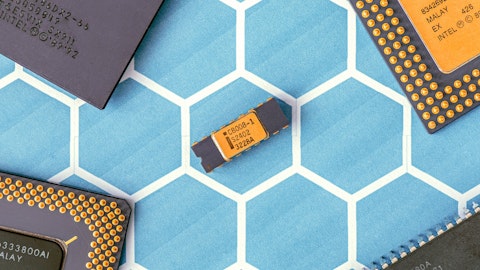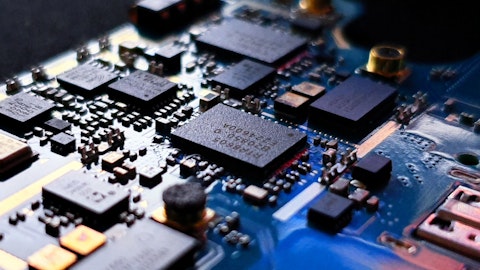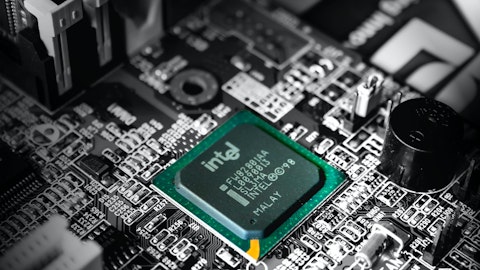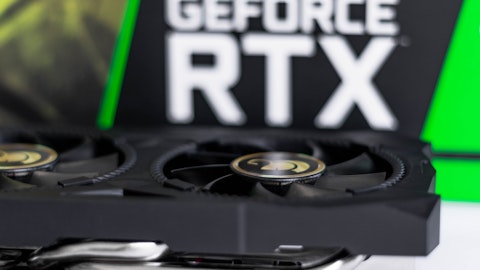In this piece, we will take a look at the five semiconductor stocks to buy today according to Peter Rathjens, Bruce Clark, and John Campbell’s Arroswtreet Capital. If you want details about the hedge fund and more stocks, then head on over to 10 Semiconductor Stocks To Buy Today According To Peter Rathjens, Bruce Clark and John Campbell’s Arrowstreet Capital.
5. International Business Machines Corporation (NYSE:IBM)
Arrowstreet Capital’s Stake Value: $440 million
Percentage of Arrowstreet Capital’s 13F Portfolio: 0.53%
Number of Hedge Fund Holders: 42
International Business Machines Corporation (NYSE:IBM) is an American company that was previously involved in the direct sales of semiconductors. However, while it has exited this business, the company is still actively involved in semiconductor research, which has enabled it to consistently deliver breakthrough technologies. The company was the first to develop a 7-nanometer chip in 2015, the first with a 5-nanometer chip in 2017, and the first with a 2-nanometer chip in 2021.
Arrowstreet Capital owned 3.2 million International Business Machines Corporation (NYSE:IBM) shares as the fourth quarter of last year came to an end. These translated into a cool $440 million stake which represented 0.53% of its investment portfolio. At the same time, 42 out of the 924 hedge funds part of Insider Monkey’s Q4 2021 poll had a stake in the company.
International Business Machines Corporation (NYSE:IBM) posted $16.7 billion in revenue and $3.35 in non-GAAP EPS for its fiscal Q4, beating analyst estimates for both. Tigress Financial reiterated a $133 share price target for the company in January 2022, outlining that the company’s cloud division is performing strongly.
Paul Marshall and Ian Wace’s Marshall Wace LLP is International Business Machines Corporation (NYSE:IBM)’s largest investor after Arrowstreet. It owns 1.3 million shares worth $181 million.
St. James Investment Company mentioned International Business Machines Corporation (NYSE:IBM) in its fourth quarter 2021 investor letter, stating that:
“IBM was not the first company to build computers. The distinction belongs to Sperry-Rand’s subsidiary UNIVAC, which introduced the first commercially successful computers in the early 1950s. In this era, IBM did possess the largest research and development department of the business machines industry and quickly caught up, introducing cost-competitive computers a few years after UNIVAC. By the late 1950s, IBM held the dominant market share in computers. IBM also touted a vastly superior sales organization, which used a sales tactic called “paper machines” (the equivalent of today’s “vaporware”). If a competitor’s product was selling well in a market segment that IBM had yet to penetrate, the company would announce a competing product and start taking orders for the “paper machine” long before it was available.
One cannot overstate how powerful IBM was in the computer industry in the 1950s and 1960s. Every competitor rightly worried that if their product worked too well for too long, it was only a matter of
time before an army of IBM salesforce representatives mobilized. In their easily recognizable uniforms of starched white shirts, red ties and blue suits, IBM marketers marched on their customers and offered a more expensive, but much more defensible, choice. “Nobody gets fired for buying IBM” was a common phrase. Even competitors acknowledged that the company excelled at sales. As a UNIVAC executive once complained, ‘It doesn’t do much good to build a better mousetrap if the other guy selling mousetraps has five times as many salesmen.’”





